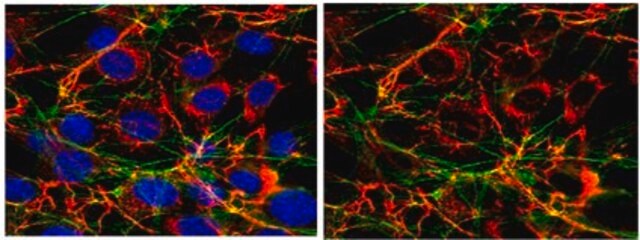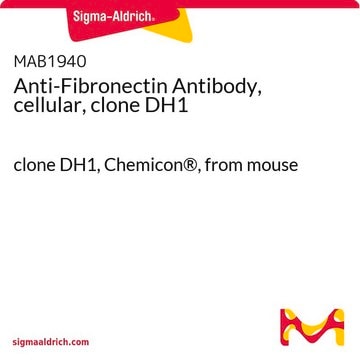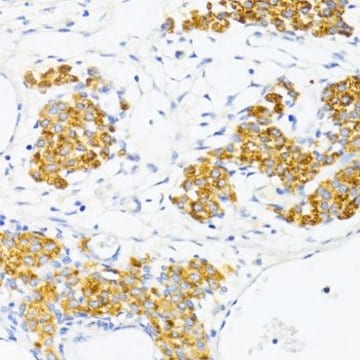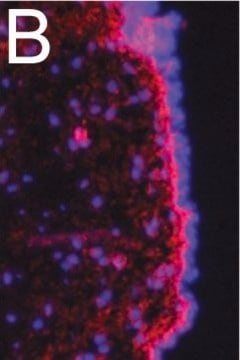詳細
Fibronectin (FN) is an extracellular matrix protein composed of two nearly-identical disulfide-bound polypeptides with typical molecular weights of 220-280 kDa. Cellular fibronectin is structurally and antigenically similar to cold insoluble globulin from plasma and antibodies to either form usually cross-react. Careful analysis of the FN molecule indicates that it contains several functionally and structurally distinct domains which may bind to cell surfaces and to a variety of molecules such as collagen, heparin, gelatin, fibrin and DNA. FN′s play an important role in diverse biological phenomena including cell adhesion, cell migration, hemostasis and thrombosis, wound healing and the ability to induce a more normal phenotype in transformed cells.
Monoclonal Anti-Human Fibronectin (mouse IgG1 iso-type) is derived from the IST-3 hybridoma produced by the fusion of mouse myeloma cells and splenocytes from BALB/c immunized mice. Fibronectin (FN) is a multifunctional extracellular matrix protein comprising two nearly-identical disulfide-bound polypeptides. It is an adhesive glycoprotein. FN belongs to the ligand glycoprotein family and is is expressed in various cell types. Human fibronectin consists of five distinct domains that are referred to as heparin (Hep)-1/ fibrin (Fib)-1, gelatin (Gel), cell surface (Cell), Hep-2 and Fib-2, based on their affinity for Hep, Gel, Cell or Fib. The FN gene is mapped to human chromosome location 2q35.
特異性
Monoclonal Anti-Human Fibronectin, clone IST-3, recognizes an epitope located within the fourth type-three repeat of human plasma fibronectin.
アプリケーション
Mouse monoclonal clone IST-3 anti-Human Fibronectin antibody has been used in:
- enzyme linked immuno sorbent assay (ELISA)
- western blotting
- dot blot
- radio immunoassay (RIA)
- immunocytochemistry
- immunohistochemistry
- immunoprecipitation
- immunofluorescence
生物化学的/生理学的作用
Fibronectin (FN) binds to cell surfaces and a variety of molecules, such as collagen, heparin, gelatin, fibrin, and DNA. It plays an important role in diverse biological phenomena including cell adhesion, cell migration, hemostasis, and thrombosis. FN is also involved in wound healing and stimulates a normal phenotype in transformed cells. Upregulation of FN leads to tumors, such as nasopharyngeal carcinoma (NPC), ovarian cancer, and head and neck squamous cell carcinoma.
物理的形状
The product is provided as ascites fluid containing 0.1% sodium azide as preservative.
保管および安定性
For continuous use, store at 2-8 °C for up to one month. For extended storage, the solution may be frozen in working aliquots. Repeated freezing and thawing is not recommended. Storage in "frost-free" freezers not recommended. If slight turbidity occurs upon prolonged storage, clarify the solution by centrifugation before use.
免責事項
Unless otherwise stated in our catalog or other company documentation accompanying the product(s), our products are intended for research use only and are not to be used for any other purpose, which includes but is not limited to, unauthorized commercial uses, in vitro diagnostic uses, ex vivo or in vivo therapeutic uses or any type of consumption or application to humans or animals.













